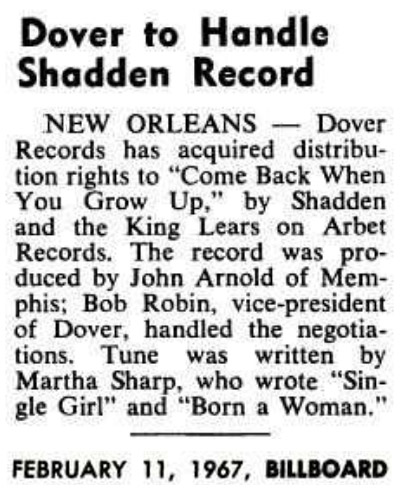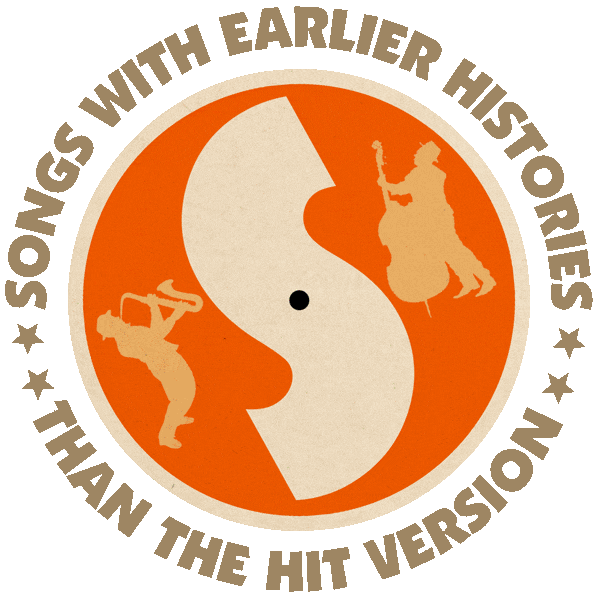First recorded by Shadden and the King Lears (released February 1967).
Hit version by Bobby Vee (released June 1967 US #3).
From the wiki: “‘Come Back When You Grow Up’ was written by Martha Sharp, who would later become an executive at Warner Records and is credited with discovering Randy Travis in early 1980s.

Shadden and the King Lears’ original distribution notice for ‘Come Back When You Grow Up’, published in Billboard, Feb. 11, 1967, four months ahead of the Bobby Vee release date.
“Shadden and the King Lears, formed by Shad Williams, hailed from Memphis, TN, and performed together from the early 1960’s until 1968 when Shad quit the band to go to Seminary. The group was best known for several regional hit records, including ‘Come Back When You Grow Up’, which topped local radio charts up and down the Mississippi River ahead of the Bobby Vee cover version. Shad had happened across the song in a publisher’s music demo catalog. He liked the words but did not like the musical arrangement, so Shad and a couple of band members reworked the arrangement and the end result was the song you know today.

